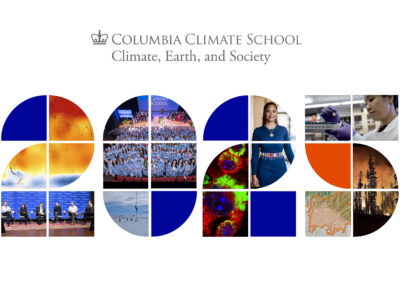
Won-Young Kim, a senior scientist at Columbia University’s Lamont-Doherty Earth Observatory, has won the Jesuit Seismological Association Award from the Seismological Society of America for his work on wide-ranging questions both local and global. Among other things, he has assessed earthquake hazards in New York City and beyond; developed methods of monitoring nuclear-bomb tests; and clarified the sequence of events during the terrorist attacks of Sept. 11, 2001.
At Lamont for almost two decades, Kim is chief scientist for the Lamont Cooperative Seismic Network, the 25-station system that monitors most of the northeastern United States. He has coauthored many papers on “intraplate” earthquakes—those occurring in supposedly stable areas such as the U.S. East Coast and the Midwest–and gone on to develop finely tuned methods to locate such quakes with far more accuracy than previously possible. “The earthquakes he is studying are not even supposed to happen,” said Art Lerner-Lam, head of Lamont’s division of seismology, geology and tectonophysics. “But they do, and through his work, seismologists have developed an awareness that they can be analyzed fruitfully.” Usually the first call for authorities and media responding to occasional small temblors in the New York area, Kim documented the first ones shown to have taken place under Manhattan itself, in January and October of 2001. Recently he coauthored a 2008 paper with other Lamont seismologists showing that the region is underlain by a series of small but potentially dangerous faults. He has also worked with the U.S. Geological Survey to study how the ground in Manhattan might move during a quake.
On Sept. 11, 2001, the Lamont network recorded the impacts of two jets hitting the twin towers of the World Trade Center, and their subsequent collapses. “I just cried,” Kim told The New York Times. Then, he went to work, leading the effort to analyze the data. Initially, there were mistaken reports about the exact times of the attacks, but Kim and his colleagues pinpointed them through the seismic recordings: 8:46:26 a.m. and 9:02:54 a.m. Their analysis also clarified the time when a third hijacked plane crashed in Shanksville, Pa.: 10:06:05 a.m. The findings became part of the official government report on the tragedy.
Kim and his colleague Paul Richards have frequently visited the former Soviet Republic of Kazakhstan and other parts of Asia in order to uncover and analyze data recorded during Soviet times; there, they have also worked with resident scientists to collect new data. Among other things, in the 1990s they found and analyzed an extensive archive of high-quality seismograms from Russian Cold War nuclear-bomb tests—a feat that has allowed them to refine methods to distinguish between natural earthquakes, mine collapses, chemical explosion, and actual nuclear detonations. The methods have been used to assay bomb tests by India and Pakistan. On Oct. 9, 2006, when North Korea claimed it had carried out a nuclear test, Kim was able to show that the claim was true, even though the yield was quite low.
“He is one of the best observational seismologists for regional earthquakes in the world, and his work influences a broad range of other endeavors,” said Lerner-Lam.
Administered by the Eastern Section of the Seismological Society, the award has no formal connection to the Catholic Jesuit order of priests. It is named in their honor because the Jesuits were a key force in developing the science of observational seismology worldwide starting in the mid-1800s. Until recently they maintained an extensive network of observatories throughout the United States.



